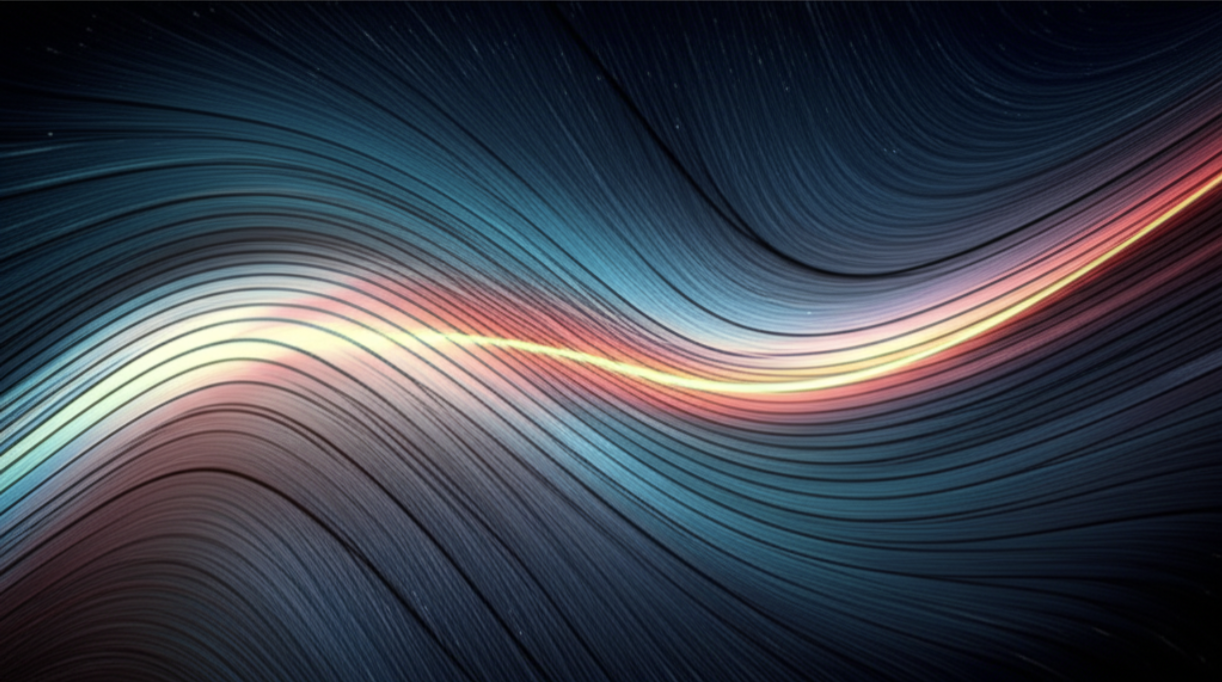I. Introduction: The Grand Illusion
What if the relentless tick-tock of your watch, the unwavering march of calendars, the
very feeling of time’s passage, were all part of a grand cosmic illusion? Prepare to have
your perceptions challenged, your intuitions questioned.
The big idea? “Time,” as we naively understand it, isn’t a separate entity, a river flowing
independently of the universe. Instead, it’s woven inextricably into the fabric of
spacetime, a dimension intimately linked with movement. Yes, I know it sounds like
science fiction, but the universe consistently reveals itself to be far stranger than we can
readily imagine.
The gift to humanity in understanding this? A profound shift in perspective. It’s a
revolutionary lens through which to view our place in the cosmos, our very existence. It
is a paradigm shift that reframes the human experience.
We’ll embark on a journey through the history, the current cutting-edge science, the
philosophical debates, and the potential future of this extraordinary cosmic tapestry.
Prepare for a wild ride.
II. From Absolute Ticks to Cosmic Warps: A Brief
History of Time
Once upon a time, Isaac Newton provided us with the comforting idea of “absolute time”
- a universal, unchanging clock ticking identically for everyone, everywhere. A simple,
elegant, and reassuring notion, much like a warm blanket on a cold night. Alas, like
many comforting notions, it turned out to be, shall we say, incomplete.
Then, scientists began to notice anomalies, cracks in the Newtonian facade. The speed
of light, in particular, presented a problem. The famous Michelson-Morley experiment,
for instance, delivered a rather inconvenient message: the hypothetical luminiferous
ether, the medium through which light was supposed to propagate, simply didn’t exist.
Before Einstein, Henri Poincaré was already glimpsing the unsettling truth, hinting at the
relativity of simultaneity and playfully toying with the concept of a four-dimensional
universe. He was on the verge of a breakthrough but didn’t quite take the plunge.
Enter Albert Einstein, the revolutionary. In 1905, his special theory of relativity detonated
our understanding of time. No longer absolute, time became relative, its passage
dependent on your motion. The faster you move through space, the slower you move
through time. Time dilation and length contraction emerged, warping our classical
intuition.
In 1908, Hermann Minkowski, Einstein’s former professor, provided the ultimate
conceptual framework: spacetime. He mathematically demonstrated that space and
time are not separate entities but rather inseparable components of a unified four-
dimensional fabric. A profound synthesis.
Einstein wasn’t finished. In 1915, his general theory of relativity reimagined gravity not
as a force, but as a curvature of spacetime caused by massive objects. Planets and
stars literally dent the spacetime fabric, and these dents dictate the paths of objects
moving within them. Imagine a bowling ball on a trampoline – that’s gravity!
III. The Universe’s Dynamic Fabric: What Science Says
Today
In this four-dimensional spacetime, you are in constant motion. Even when apparently
stationary in space, you’re hurtling through time at your maximum rate. Accelerate
through space, and you decelerate through time, locked in a cosmic ballet.
The “dents” in spacetime aren’t merely theoretical constructs; they have measurable
effects on time. Clocks tick slower near strong gravitational sources, a phenomenon
known as gravitational time dilation. This isn’t some abstract thought experiment, either
– GPS satellites must account for this effect to function accurately.
While time is indeed a dimension, it’s a peculiar one. Unlike space, where movement is
possible in multiple directions, time seems to flow only forward. We have entropy, the
tendency for systems to become more disordered, and the mysterious “arrow of time,”
which dictates time’s unidirectional flow.
Perhaps the most mind-bending aspect is the absence of a universal “now.” Because
time is relative, there isn’t a single, universally agreed-upon “present moment” across
the cosmos. Your “now” is uniquely defined by your specific trajectory through
spacetime.
IV. The Great Debate: Philosophers, Physics, and the “Flow” of Time
If spacetime is a static four-dimensional map, as suggested by the block universe theory
(or eternalism), does that imply all moments – past, present, and future – already exist?
Many physicists, including Einstein himself, have entertained this possibility. Your entire
life becomes a “worldline,” pre-determined and immutable. A chilling thought, perhaps.
Philosophers, however, grapple intensely with the block universe. We experience time
as flowing, as a succession of moments, with a distinct “present” constantly coming into
being. Does physics, in its elegant equations, somehow overlook our lived reality?
Theories such as presentism and the growing block theory attempt to reconcile physics
with our subjective experience of temporal flow.
Perhaps even more radically, some thinkers, such as Carlo Rovelli, suggest that time
may not be a fundamental building block of the universe at all, but rather an “emergent
property” arising from deeper, timeless processes. A provocative idea that challenges
our most basic assumptions.
The confusion may also stem from a language barrier. Our everyday words for “time” –
“flow,” “now,” “exist” – are ill-suited to the technical, mathematical language of physics.
This mismatch inevitably leads to misunderstandings and seemingly intractable
debates.
V. Beyond the Clock: The Future of Spacetime Exploration
The holy grail of modern physics remains the reconciliation of Einstein’s elegant
spacetime with the bizarre, probabilistic world of quantum mechanics. The quest for a
theory of quantum gravity continues.
A multitude of wild ideas abound. Perhaps spacetime isn’t quantum itself, but rather
quantum theory needs revision (“postquantum theories of classical gravity”)? Or
perhaps spacetime emerges from quantum entanglement, a phenomenon where
particles become linked regardless of distance?
Even more astonishingly, some cutting-edge theories, such as F-theory or Gunther
Kletetschka’s recent (2025) 3D time framework, propose that time
possesses multiple dimensions, with space potentially emerging from them. The
implications are staggering, although some caution that they could also lead to utter
chaos.
Observatories like LIGO are already detecting gravitational waves, ripples in spacetime
itself, offering a novel way to “see” the universe. Future upgrades, such as LIGO-India
by 2030, may even detect the quantum whispers of gravity.
Hyper-precise atomic clocks and quantum networks are being used to measure time
dilation with unprecedented accuracy, in the hopes of uncovering subtle clues that
bridge the gap to quantum gravity.
Researchers are even developing blueprints for “spacetime crystals,” made of knotted
light that repeat patterns across both space and time. Revolutionary data storage
applications are envisioned. This was published in August 2025!
VI. Conclusion: Embrace the Cosmic Wonder
We’ve journeyed from Newton’s simple clock to a universe where time is a dynamic,
relative dimension, deeply interwoven with space and gravity. A universe far more
intricate and astonishing than we ever imagined.
The real gift isn’t simply intellectual understanding; it’s a profound shift in perspective, a
deeper appreciation for the universe and our place within it. It challenges our deepest
intuitions and opens up thrilling new possibilities.
Accept the gift and disregard time. If there were no movement through spacetime, there
would be no passing time. Consequently, reconcile modern physics and quantum
physics by disregarding time and utilizing it as a dimension akin to gravity.
So, the next time you glance at a clock, remember: it’s not just marking a linear
progression. It’s a tiny window into your unique, incredible journey through the warping,
bending, and constantly evolving fabric of spacetime. How does that change your
“now”?

